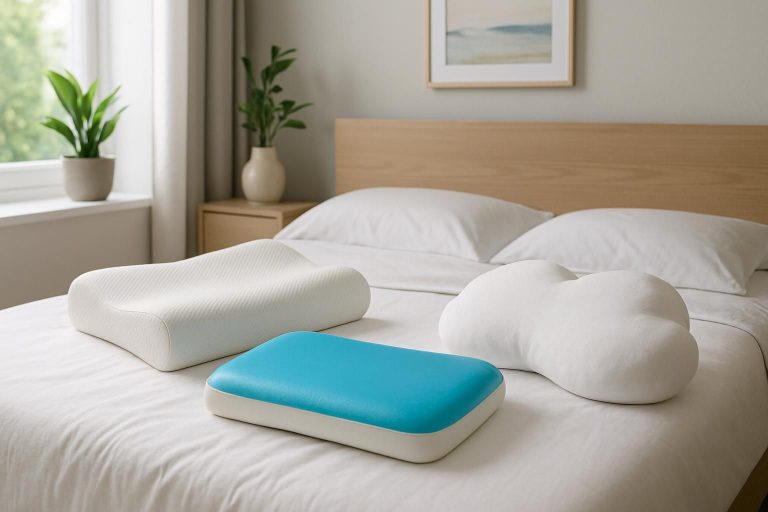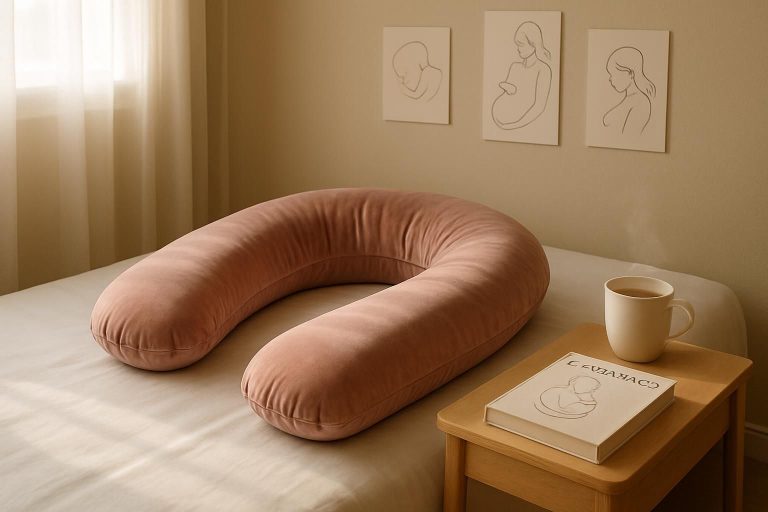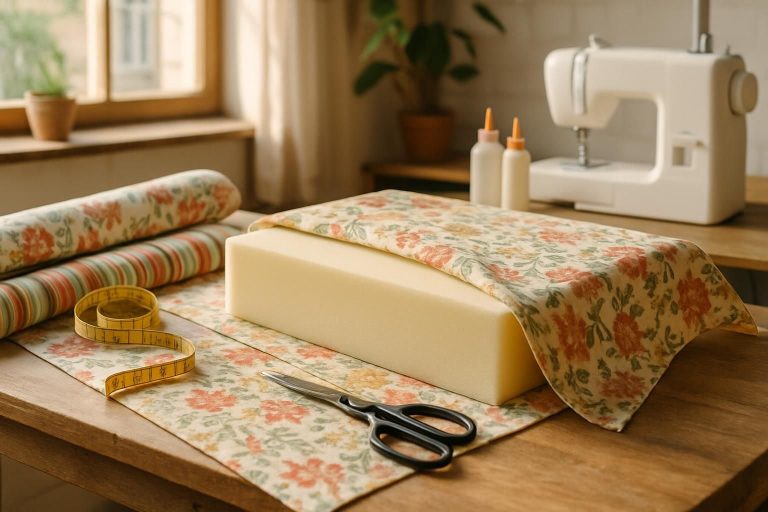The choice of a pillow is not just a matter of comfort; it is a real factor influencing sleep quality and the prevention of neck and back issues. An appropriate pillow ensures optimal support for the head, neck, and spine, promoting deep and restorative rest. The variety of shapes, sizes, fillings, and firmness levels meets diverse needs related to morphology, sleeping habits, or personal preferences. Innovative solutions such as memory foam or latex pillows have revolutionized standards by combining ergonomics with long-lasting comfort. However, with so many options available, choosing the right pillow can quickly become complex. It is therefore essential to understand the fundamental role each feature plays for optimal support and real relief from neck pain. Many users, like those of the Emma brand, report a noticeable improvement in their sleep thanks to a precisely fitted pillow. Combining practical advice and scientific insights, this considerate guide helps in selecting the perfect pillow, a valuable ally for truly restorative nights 🛏️🌙.
Why does pillow choice impact sleep quality?
The key role of the pillow in maintaining cervical and dorsal alignment
The importance of a good pillow begins with its ability to effectively support the head and neck. An inadequate pillow can disrupt the natural cervical alignment, causing muscle tension and increasing the risk of pain. The spine should remain in a neutral position—neither overly arched nor overly flexed—to promote optimal blood circulation during sleep.
A quality pillow, especially ergonomic models made of memory foam or latex, perfectly contours to the neck’s curves. This preserves cervical lordosis, reduces painful pressure points, and significantly enhances muscle recovery. Studies show that proper alignment is crucial to prevent frequent awakenings and morning stiffness. It is also a major factor in reducing nocturnal stress and fostering better brain oxygenation.
-
Optimal support for the head, neck, and shoulders 🧑⚕️
-
Preservation of the natural spine position
-
Reduction of cervical and dorsal pain risks
-
Improved sleep quality and depth 🌙
-
Promotes muscle relaxation and blood circulation
Preventing pain: how pillows influence restful nights
Neck and back pain are among the most common causes of sleep disturbances. An ill-fitting pillow does not relieve these sensitive areas; instead, it can worsen discomfort. Therefore, it is crucial that the pillow offers dynamic support, neither too firm nor too soft, capable of adapting to nocturnal movements.
Feather pillows, appreciated for their natural softness, often provide plush comfort but may lack firmness for some profiles. Memory foam, on the other hand, is ideal for absorbing pressure and distributing the weight of the head, avoiding painful compression points. Other materials like latex stand out for their elasticity and ability to maintain a consistent shape, contributing to better posture.
-
Avoid muscle tension and stiffness 😴
-
Promote recovery after a stressful day
-
Limit nighttime awakenings caused by discomfort
-
Support the neck for better overall relaxation
-
Adapt to specific needs with ergonomic shapes
What dimensions and shapes of pillows ensure restorative sleep?
Square, rectangular, and ergonomic pillows: uses, advantages, and advice
The size and shape of a pillow directly impact its support and adaptability to various sleeping positions. Square pillows, typically measuring 60×60 cm or 65×65 cm, are very popular for their versatility. They are well suited for decorative purposes or for leaning against in a seated position, especially on a single bed or sofa. Their large size offers a enveloping comfort sensation but may reduce space when sleeping with a partner.
Rectangular pillows, known as American pillows, in standard dimensions of 45×70 cm or 50×70 cm, are preferred for sleeping. Their elongated shape provides better support for the head and neck without encroaching on the width of the bed. They are suitable for all types of beds: single, double, queen size. The wide availability of pillowcases in these formats makes maintenance easier.
The ergonomic models, often smaller (40×60 cm or 50×70 cm), with specific shapes such as wave or butterfly, promote targeted cervical support. They are designed to perfectly conform to the natural curves of the neck, thereby reducing pain associated with poor posture. Made mainly from memory foam or latex, they represent an ideal solution for those suffering from chronic cervical pain.
|
Shape |
Dimensions (cm) |
Recommended Use 🛌 |
Advantages 🌙 |
Care Instructions |
|---|---|---|---|---|
|
Square |
60×60, 65×65 |
Rest & Sitting |
|
Surface washable, easy covers |
|
Rectangular |
45×70, 50×70 |
Sleeping, all positions |
Less space sharing, good support |
Often machine washable |
|
Ergonomic |
40×60, 50×70 |
Targeted cervical support |
Precise, reduces pain |
Specific cleaning, not always washable |
Choosing the right pillow size based on bedding and sleeping position
The ideal pillow size closely depends on the bed width and sleeping position. On a single bed, a square pillow offers great comfort, while on a double or queen-size bed, a rectangular pillow saves space and provides good support. Using smaller or ergonomic pillows can be beneficial for those who prefer precise support and optimal alignment.
Here are some guidelines based on position:
-
Back: Thin to medium pillow, often rectangular
-
Side: Larger, firm, rectangular or ergonomic pillow
-
Stomach: Flat and soft pillow, smaller size recommended
It is also important that the pillow size matches the sleeper’s morphology. Broader individuals or those who sleep on their side often prefer a thicker pillow to fill the space between the head and shoulder.
Pillow and sleeping position: how to choose your pillow?
Ideal pillow for back sleepers: features to prioritize
For back sleeping, it is essential that the pillow promotes natural alignment of the cervical spine. An overly thick or too soft pillow risks creating hyperflexion or hyperextension, leading to tension.
Models made of memory foam or medium to firm latex are particularly recommended. They provide support that contours to the neck’s shape while allowing the head to rest comfortably.
-
Medium to firm firmness 💪
-
Moderate thickness, neither too flat nor too high
-
Materials with memory foam or latex for proper support
-
Rectangular or ergonomic shape depending on comfort
Which pillow to choose for side or stomach sleeping?
Side sleepers need a more voluminous pillow that fills the gap between the head and shoulder, preventing cervical torsion. A firm or ergonomic pillow with a shape that maintains the head in line with the back is recommended.
Conversely, sleeping on the stomach, a position less recommended by specialists, requires a very flat and soft pillow. This helps prevent excessive compression of the neck and limits cervical tension.
-
Side: Thick, firm to very firm, ergonomic pillow advised
-
Stomach: Flat and very soft pillow, sometimes no pillow
-
Choose a soft filling for extra comfort
What are the best fillings for a good night’s sleep?
Down, feathers, latex, or memory foam: pros and cons
The choice of pillow filling directly influences its support, comfort, and durability properties. Natural fillings like feathers and down offer great softness and excellent breathability. They adapt well to temperature variations and provide a plush comfort, ideal for those seeking lightness. However, they require more maintenance and can pose allergy issues.
Synthetic or semi-natural materials such as memory foam and latex offer targeted support. Memory foam adapts precisely to the shape of the skull and neck, distributing pressure and reducing pain. Latex, whether natural or synthetic, combines elasticity, resilience, and natural anti-mite properties, ensuring good durability and consistent firmness.
-
Down & feathers: natural softness, thermoregulation, potential allergens
-
Memory foam: precise support, morphological adaptation, less breathable
-
Latex: elasticity, good support, anti-mite, durable
-
Polyester and other synthetics : economical, washable, variable support
Padding and firmness: what impact on support and breathability?
There is a close relationship between the type of padding and the perceived firmness. Feather pillows offer soft comfort and good ventilation but tend to flatten quickly, reducing their support over time. Memory foam and latex provide more stable firmness with an enveloping effect for better cervical alignment. Latex is generally more breathable than memory foam, which can be an important criterion to avoid feeling hot at night.
|
Padding |
Firmness |
Support |
Breathability |
Maintenance |
|---|---|---|---|---|
|
Feathers |
Medium to soft |
Average, variable with use |
Excellent |
Washable, delicate |
|
Down |
Soft |
Low to medium |
Very good |
Special, must be washable |
|
Memory foam |
Medium to firm |
Very good, precise |
Moderate |
Not washable, requires specific cleaning |
|
Latex |
Medium to firm |
Good, elastic |
Good |
Not washable, surface cleaning possible |
Find the perfect firmness based on your morphology and needs
Firm, soft, or medium cushion: recommendations based on sleeping position
Firmness is a key element to ensure quality sleep and limit pain. It should be chosen according to the sleeping position and the sleeper’s body shape to provide adequate support.
-
Firm 💪: recommended for back sleepers and larger body types, for optimal support and good cervical posture.
-
Medium: a good compromise, suitable for most sleepers, especially those with neck pain, as it combines support and comfort.
-
Soft: recommended for stomach sleepers or those seeking a softer sensation, though it may not always be ideal for cervical health.
Position, body shape, and neck pain: firmness criteria to consider
For individuals with frequent neck pain, medium to firm firmness is often more beneficial. It helps prevent excessive muscle compression and improper head rotation. Depending on body shape, a heavier sleeper will need a firmer pillow to avoid sinking in too much and losing support.
Here is a summary table:
|
Profile |
Sleep position |
Recommended firmness |
Impact on neck and pain |
|---|---|---|---|
|
Large body type |
Back |
Firm |
Optimizes support, reduces pain |
|
Average body type |
All |
Medium |
Good balance of comfort and support |
|
Light body type |
Stomach |
Soft |
Reduces tension, but watch posture |
Proper pillow maintenance and tips for choosing the right one for everyone
Pillow care: washable, lifespan, and hygiene against allergens
Maintaining your pillow is crucial to preserve good hygiene and limit dust mite proliferation, a common allergy source. Feather and cotton pillows can often be machine washed, which helps maintain freshness and softness over time. However, memory foam and latex pillows do not tolerate this washing method and require more delicate cleaning, such as dry cleaning or localized cleaning.
The average lifespan varies depending on the filling:
-
Feather pillows: 2 to 5 years
-
Memory foam: up to 7 years
-
Latex: durable, often 5 to 7 years
Regularly replacing your pillow is a good practice for proper support and hygiene. Using a breathable cotton pillowcase also helps reduce moisture and allergen buildup.
Special pillows, ergonomic models, and advice for babies and specific needs
For babies or individuals with specific needs, choosing the right pillow must be very precise. Baby pillows are generally very flat and made with hypoallergenic materials to ensure safety and comfort. Organic cotton or bamboo covers provide good breathability and help regulate softness.
au contact de la peau délicate des tout-petits.
Furthermore, the market offers anti-dust mite, thermoregulating, or anti-snoring pillows. These models provide additional benefits for sleepers suffering from allergies, sleep disturbances, or seeking specific comfort. Ergonomic pillows are especially recommended for people experiencing neck pain, offering personalized support but requiring an adjustment period.
Focus on ergonomic and orthopedic pillows
Targeted support to combat neck and back pain
Ergonomic pillows, often favored by brands like UTTU or Emma, are particularly suited for individuals seeking personalized comfort and postural correction. Their shape perfectly contours to the head and neck, ensuring support and better pressure distribution.
Although their cost is higher than traditional pillows, they prove cost-effective for sleepers with chronic neck issues. They can be made from memory foam or latex, combining appropriate firmness with lasting comfort. A few nights of adaptation are usually necessary to get used to this new sensation.
-
Significant reduction in neck and back pain 🧑⚕️
-
Optimal maintenance of spinal alignment
-
Precise and comfortable support
-
Innovative and durable materials (memory foam, latex)
Examples of popular models and key features
Brands such as Emma and UTTU offer adjustable, height-modifiable pillows with certified memory foam fillings. They often feature breathable cotton or viscose covers, washable for optimal hygiene.
These pillows meet the expectations of sleepers experiencing pain, allergies, or seeking adaptable comfort: optimal support, well-designed ergonomic shape, high-quality materials, and long durability. Some versions combine multiple foam layers to adjust firmness and comfort, resulting in deeper, more restful sleep.
Summary of essential criteria for making your choice
To choose the right pillow, several key criteria should guide your decision:
-
Size suited to the bed size and body morphology 👤
-
Shape matching your sleeping position (back, side, or stomach) 🛏️
-
Fill material selected based on comfort, support needs, and allergies (feathers, memory foam, latex, natural) 🌿
-
Firmness related to sleeping posture and neck pain 💪
-
Maintenance to ensure hygiene and optimal longevity 🧼
There is no one-size-fits-all pillow, but rather the best pillow for each individual! By combining these factors with attentive listening to your body, deep and restorative sleep becomes accessible.
FAQ – Frequently Asked Questions about pillow selection
-
Which pillow is best to limit neck pain?
An ergonomic or memory foam pillow with medium to firm support is ideal for maintaining proper cervical alignment and reducing pain. -
How can I tell if my pillow is too old?
A pillow that has lost its support, sags, or causes pain or poor sleep for several weeks should be replaced. The average lifespan varies between 2 and 7 years depending on the filling. -
Are feather pillows suitable for allergy sufferers?
They may pose allergy risks. It’s better to opt for a natural latex or memory foam pillow with an anti-dust mite cover to prevent irritations. -
Can any pillow be washed in a washing machine?
Feather and cotton pillows are generally washable, unlike memory foam or latex pillows, which require specific cleaning methods. -
How to choose a pillow for a baby?
Prioritize a very flat, hypoallergenic pillow with a cotton or bamboo cover to ensure good breathability and reduce the risk of suffocation.



